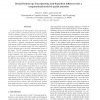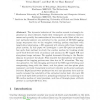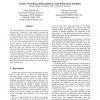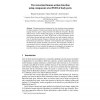461 search results - page 88 / 93 » Learning epipolar geometry from image sequences |
PAMI
2011
12 years 10 months ago
2011
—We present a discriminative part-based approach for human action recognition from video sequences using motion features. Our model is based on the recently proposed hidden condi...
CVPR
2007
IEEE
14 years 9 months ago
2007
IEEE
A critical function in both machine vision and biological vision systems is attentional selection of scene regions worthy of further analysis by higher-level processes such as obj...
SCALESPACE
2009
Springer
14 years 2 months ago
2009
Springer
Abstract. The dynamic behavior of the cardiac muscle is strongly dependent on heart diseases. Optic flow techniques are essential tools to assess and quantify the contraction of t...
FGR
2000
IEEE
13 years 12 months ago
2000
IEEE
This paper proposes a state based approach to gesture learning and recognition. Using spatial clustering and temporal alignment, each gesture is defined to be an ordered sequence ...
AMDO
2008
Springer
13 years 9 months ago
2008
Springer
This paper presents a framework for view-invariant action recognition in image sequences. Feature-based human detection becomes extremely challenging when the agent is being observ...




